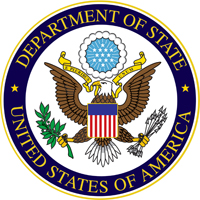Re: ВОССОЕДИНЕНИЕ СЕМЬИ -кто что знает??
Да, спасибо, разобрались.
Еще вопрос, если можно
Сестру, которая не замужем, старше 21 года, выгоднее вызвать сестре-гражданке США? или родителям со статусом постоянного жителя? или необходимо родителям ждать получения гражданства, а потом вызывать?
Надеюсь, мы получим до осени иммиграционные визы. Дальше надо подумать, как забрать детей. Спасибо за участие.
Да, спасибо, разобрались.
Еще вопрос, если можно
Сестру, которая не замужем, старше 21 года, выгоднее вызвать сестре-гражданке США? или родителям со статусом постоянного жителя? или необходимо родителям ждать получения гражданства, а потом вызывать?
Надеюсь, мы получим до осени иммиграционные визы. Дальше надо подумать, как забрать детей. Спасибо за участие.


 А так хоть есть вероятность пройти по каким-нибуд' другим программам....
А так хоть есть вероятность пройти по каким-нибуд' другим программам....
Comment